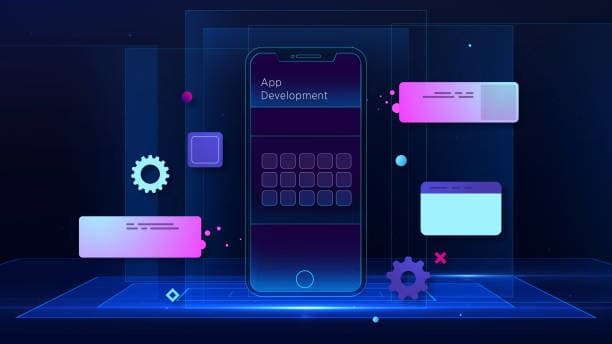
Cross-Platform Development Evolution: Streamlining App Creation Across Ecosystems
Evolution of Cross-Platform Development: Streamlining App Creation Across Ecosystems

Key Trends | Technological Innovations | Best Practices |
|---|---|---|
Hybrid Development with Flutter and React Native | Unified Development Environments | Designing for Platform Consistency |
Progressive Web Apps (PWAs) | Cloud-Based Build and Deployment Services | Optimizing Performance and Responsiveness |
Cross-Platform Toolkits and Libraries |
Introduction:
In the dynamic landscape of app development, the evolution of cross-platform development has emerged as a game-changer. With the proliferation of multiple platforms and ecosystems, developers face the challenge of creating applications that seamlessly operate across diverse devices and operating systems. This blog explores the evolution of cross-platform development and how it streamlines app creation across ecosystems.
Understanding the App Development Ecosystem:
The app development ecosystem encompasses a myriad of platforms, including iOS, Android, Windows, and web-based applications. Each platform has its unique set of tools, languages, and frameworks, making it challenging for developers to create applications that cater to all users effectively.
Cross-Platform App Development:
Cross-platform app development tackles this obstacle by allowing developers to create code once and distribute it across various platforms. This method not only simplifies the development procedure but also boosts effectiveness and shortens the time it takes to bring the product to market.

Streamlining App Creation Processes:
One of the key benefits of cross-platform development is the streamlined app creation process. By leveraging unified development frameworks and tools, developers can simplify complex coding tasks and accelerate the development lifecycle. For example, platforms like Xamarin and React Native allow developers to build native-like apps using a single codebase, thereby minimizing development efforts and maximizing productivity.
TOP LEVEL MOBILE APP DEVELOPMENT FRAMEWORKS IN 2023 |
|---|
Flutter |
React Native |
Ionic |
Xamarin |
Native Script |
Apache Cordova |
Framework7 |
JQuery Mobile |
Sencha Ext JS |
Onsen UI |
According to a Research:
The market for cross-platform app development is forecasted to reach $120 billion in 2023 and is expected to surge to $546.7 billion by 2033, fueled by the sustained popularity of React Native and the continuous demand for its services.
Enhancing App Development Efficiency:
Cross-platform development offers significant efficiency gains for app developers. According to recent statistics, developers can save up to 30% of development time by adopting cross-platform development strategies. This efficiency boost is attributed to the reuse of code components, standardized development practices, and simplified debugging processes.

Unified App Development Strategies:
Unified app development strategies play a pivotal role in streamlining cross-platform app creation. By adopting a unified approach, developers can maintain consistency across different platforms, ensuring a seamless user experience. This approach also facilitates easier maintenance and updates, as changes can be applied uniformly across all platforms.

Multi-Ecosystem App Creation:
In today's interconnected world, multi-ecosystem app creation is becoming increasingly prevalent. Developers are tasked with creating applications that operate seamlessly across a wide range of devices, including smartphones, tablets, wearables, and IoT devices. Cross-platform development offers a viable solution to this challenge by providing a unified development environment for building multi-ecosystem apps.

Seamless Cross-Platform Integration:
Seamless cross-platform integration is essential for ensuring a cohesive user experience across different devices and platforms. By leveraging cross-platform development frameworks and tools, developers can achieve seamless integration of features and functionalities, regardless of the underlying platform. This enables users to transition seamlessly between devices without any loss of data or functionality.

Cross-Platform Development Trends:
The evolution of cross-platform development is characterized by several key trends. These include the rise of progressive web apps (PWAs), which offer a hybrid approach to app development by combining the best of web and native technologies. Additionally, the adoption of cloud-based development tools and services is enabling developers to build and deploy cross-platform apps more efficiently.

Conclusion:
In conclusion, the evolution of cross-platform development represents a significant milestone in the app development landscape. By streamlining app creation processes, enhancing development efficiency, and enabling seamless cross-platform integration, cross-platform development is empowering developers to create innovative apps that cater to diverse ecosystems. As technology continues to evolve, cross-platform development will undoubtedly play a central role in shaping the future of app development.
FAQs
What is the significance of multi-platform app creation in the evolution of cross-platform development?
Multi-platform app creation plays a crucial role in enabling developers to reach a wider audience by deploying applications across various platforms such as iOS, Android, and web-based platforms. It ensures maximum market penetration and user engagement by catering to diverse user preferences and device ecosystems.
How does streamlined app creation contribute to the efficiency of cross-platform development?
Streamlined app creation simplifies the development process by optimizing workflows, reducing redundancy, and enhancing productivity. By adopting efficient development practices and leveraging advanced tools, developers can accelerate the app creation process, resulting in faster time-to-market and cost savings.
What are the key benefits of unified app development in cross-platform development ecosystems?
Unified app development allows developers to use a single codebase to build applications that run seamlessly across multiple platforms. This approach ensures consistency in user experience, reduces development efforts, and simplifies maintenance and updates. It also fosters collaboration among development teams and promotes code reusability, leading to greater efficiency and productivity.